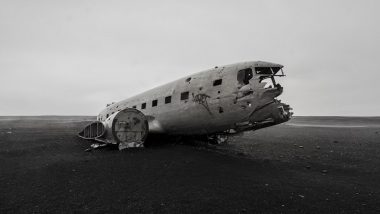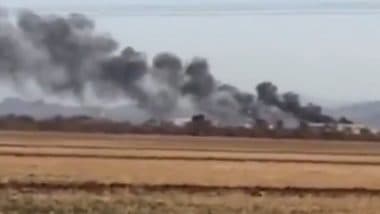Air travel, while one of the safest modes of transportation, has seen its share of catastrophic events. These incidents, marked by loss and tragedy, have left an indelible impact on the aviation industry and the world. Plane crashes have captured global attention and provoked significant changes in aviation safety practices. Notably, in the past 30 years, the world witnessed about 720 aeroplane crashes, where the death toll is regarded as mountainous. The situation worsened with another plane crash in Nepal that took place on July 24, killing 18 out of 19 people on board in Saurya Airline Aircraft. We at LatestLY have curated some of the deadliest plane crashes in the world, offering insights into these catastrophic incidents. Captain Manish Shakya: Who Is the Lone Survivor in Nepal Plane Crash?
1. Tenerife Airport Disaster (1977)
The Tenerife Airport disaster remains the deadliest aviation accident in history. On March 27, 1977, two Boeing 747 jumbo jets collided on the runway at Los Rodeos Airport (now Tenerife North Airport) in the Canary Islands. The collision resulted in the deaths of 583 people, with only 61 survivors. The tragedy was caused by a combination of dense fog, miscommunication between the aircraft crews and air traffic control, and operational errors. This disaster led to significant changes in international aviation safety protocols, including improvements in cockpit communication and air traffic control procedures.
2. Japan Airlines Flight 123 (1985)
On August 12, 1985, Japan Airlines Flight 123 suffered a catastrophic decompression due to a faulty repair on its rear pressure bulkhead. The Boeing 747 broke apart in mid-air while en route from Tokyo to Osaka, resulting in the deaths of 520 of the 524 people on board. The incident highlighted the critical importance of aircraft maintenance and the need for rigorous quality control in aviation operations.
3. Air India Flight 182 (1985)
Air India Flight 182 was destroyed by a bomb explosion over the Atlantic Ocean near Ireland on June 23, 1985. The Boeing 747 -237B was en route from Toronto to Mumbai when the device detonated, causing the aircraft to break apart and crash into the sea. All 329 people on board, including 24 Indians and 268 Canadian citizens, the majority of whom were of Indian descent, were killed.
4. Lockerbie Bombing (1988)
The Lockerbie bombing, which took place on December 21, 1988, involved the destruction of Pan Am Flight 103 by a bomb over Lockerbie, Scotland. The explosion killed all 259 passengers and 11 people on the ground. The incident was linked to Libyan terrorists and became a pivotal moment in the fight against international terrorism, prompting changes in security protocols and international cooperation in combating terrorism.
5. Charkhi Dadri Mid-Air Collision (1996)
The Charkhi Dadri mid-air collision occurred on November 12, 1996, when a Saudi Arabian Airlines Boeing 747 and a Kazakhstan Airlines Ilyushin Il-76 collided over Charkhi Dadri, India. The accident resulted in the deaths of 349 people, making it the deadliest mid-air collision in history.
6. Malaysia Airlines Flight MH17 (2014)
On July 17, 2014, Malaysia Airlines Flight MH17 was shot down by a missile over eastern Ukraine while en route from Amsterdam to Kuala Lumpur. The attack resulted in the deaths of all 298 people on board. The incident was a consequence of the ongoing conflict in the region and heightened tensions between Ukraine and Russia. The court handed down life imprisonment to the Russian nationals Igor Girkin and Sergey Dubinsky and a Ukrainian, Leonid Kharchenko, after finding them guilty of bringing down the plane and the murder of everyone onboard.
7. Yeti Airpline Nepal Plane Crash (2023)
A tragic plane crash occurred in Nepal on January 15, 2023, involving a Yeti Airlines ATR 72-500 aircraft that was en route from Kathmandu to Pokhara. The aircraft, carrying 72 people, including passengers and crew, crashed while attempting to land at the newly opened Pokhara International Airport. The incident resulted in the deaths of all on board, marking one of the deadliest aviation disasters in Nepal's recent history. According to the report issued by a government-appointed investigation panel, the plane crash was caused by the pilot mistakenly cutting power leading to an aerodynamic stall.
These air disasters, though tragic, have driven significant improvements in aviation safety and technology. Each incident has contributed to a deeper understanding of aviation risks and led to enhanced safety protocols to prevent future tragedies. As we remember those lost in these events, we also acknowledge the progress made in making air travel safer for everyone.
(The above story first appeared on LatestLY on Jul 25, 2024 04:10 PM IST. For more news and updates on politics, world, sports, entertainment and lifestyle, log on to our website latestly.com).













 Quickly
Quickly




















